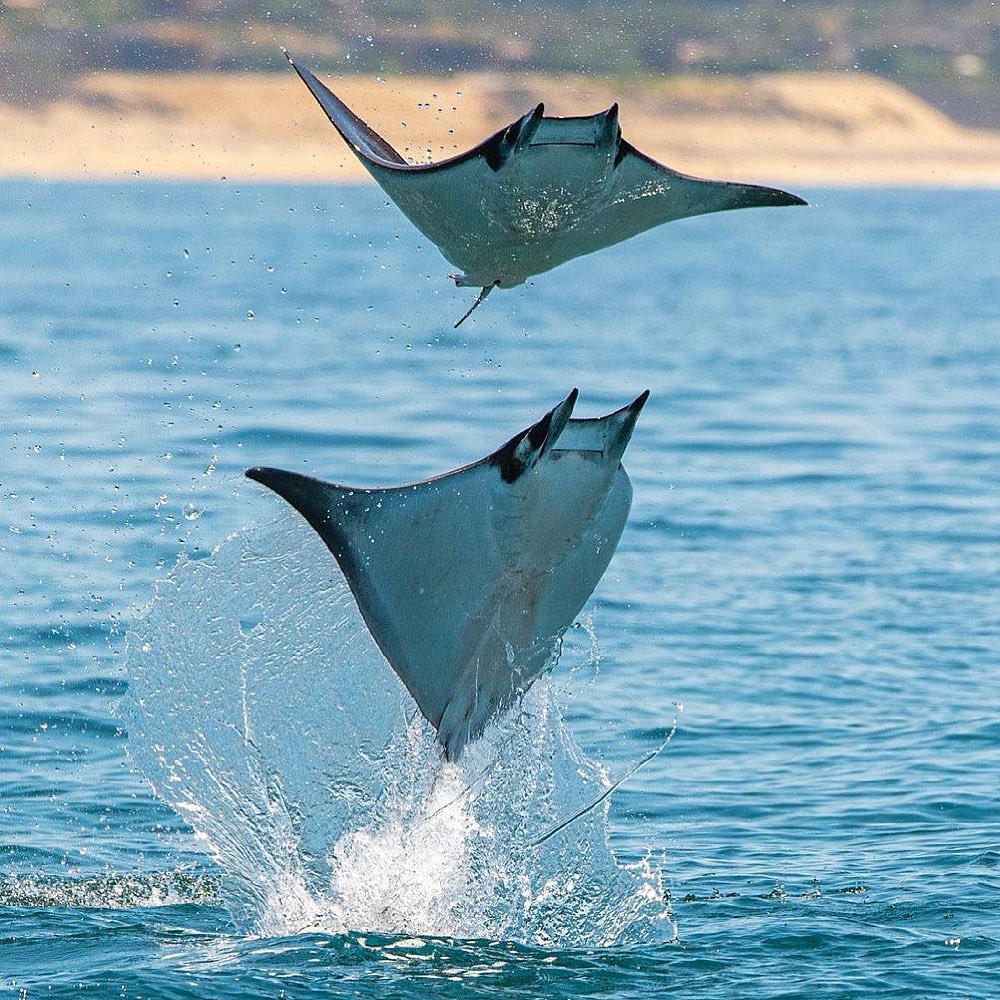The sight of a massive gathering of Mobula Rays also referred to as Devil Rays, is nothing short of breathtaking. Some divers have been lucky to witness this incredible phenomenon while others have only seen it on nature shows. But nothing beats witnessing this incredible display firsthand.
Fascinating creatures
Devil Rays are charismatic and gentle marine animals. Despite their somewhat menacing appearance, they are harmless to humans. These filter-feeders enjoy feasting on krill, plankton, and small fish. They are intelligent and curious creatures that’s why encountering them in the wild is an amazing experience. We just love swimming with these graceful animals.
There are various kinds of Mobula Rays found in different parts of the world. In Baja California, Mexico, massive schools of Mobula Munkiana, also referred to as Munk’s Devil Rays, roam the waters of the Sea of Cortez and the Pacific Ocean. Compared to their larger cousins, Munk’s Devil Rays grow to only 1 meter wide which makes them the smallest of the Mobula genus. The Mobula ray season in Baja California Sur runs from April to July. Join Baja Shark Experience on our next expedition to see the ocean’s graceful giants in action plus other incredible marine creatures. Check out our swim with sharks Cabo San Lucas to know more about our exciting underwater adventures.
Why do Mobula Rays jump
Lucky people who witness Devil Rays perform surface acrobatics rave about their experience. Watching these marine creatures make aerial leaps is truly an unforgettable experience. Just imagine being at the right time and place to see Mobula Rays jump, turn, twist, and make impressive belly flops. We have been fortunate enough to see these magical creatures doing their flipping aerial maneuvers. We can’t help but think of them like sea pancakes. When you get the opportunity to see it unfold before your eyes, you can tick it off from your bucket list. Here’s an incredible shot by Caine Delacy during one of our expeditions.

It is not certain why Mobulas jump in the air so vigorously. There are theories claiming that they jump to communicate with each other, escape from predators, get rid of parasites, or part of an elaborate courtship ritual. Whatever the real score is, we’re just happy to witness this kind of nature show.
What are the threats to Mobula Rays
Did you know that these majestic creatures have been roaming the oceans for 20-25 million years? Although they have survived many challenges for eons, their resilience is being put to the test.
Growing demand for dried gill plates
The International Trade of Mobula Rays’ dried gill plates is one of the reasons behind the decline of their population. They are targeted to harvest their gill plates which are exported to China to be used as an ingredient in a health tonic that is marketed to boost the immune system and enhance blood circulation. Mobulas are victims of this devastating trade by fishers.
Fisheries
Mobulas are killed or captured using different fishing methods including netting, harpooning, trawling, and longlining. One of the biggest threats is targeted fishing that takes place at critical habitats. Catching a large number of Mobula Rays over a short period of time puts them in danger. With low reproductive rates, these creatures will have a difficult time recovering. Although Mobulas have legal protection in certain regions, when they migrate to waters with unregulated fisheries, they do not have immunity. They are also vulnerable to incidental catches in fisheries. Mobula Rays bycatch in tuna purse seines, gillnet fisheries, and large-scale trawlers are key threats.
Support sustainable tours
Baja Shark Experience promotes sustainable tours like shark diving Cabo by providing our guests with an educational and adventurous underwater experience in Baja. Our marine life encounters foster a sense of environmental stewardship.
